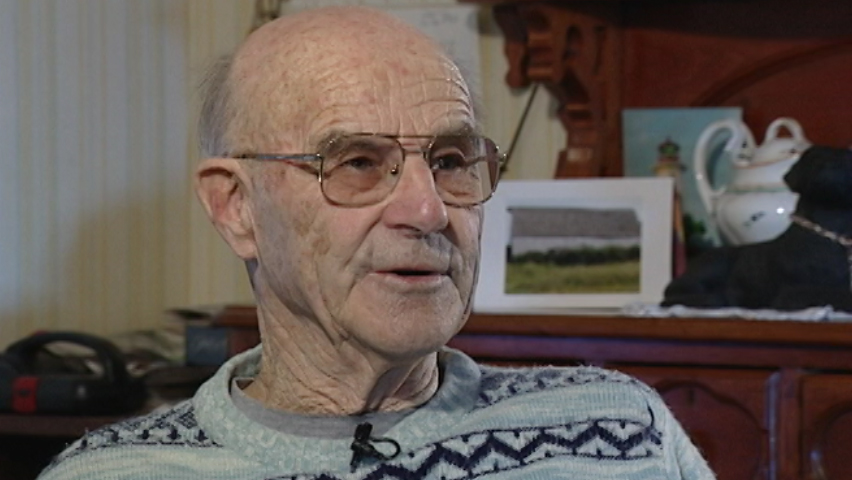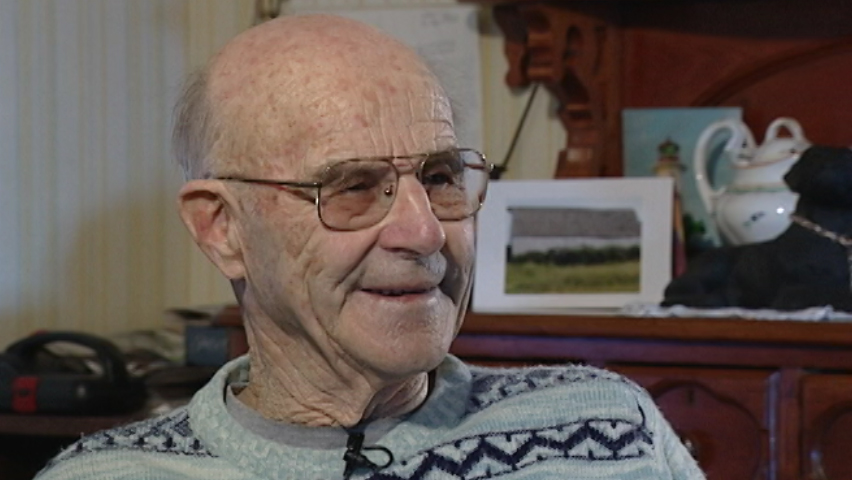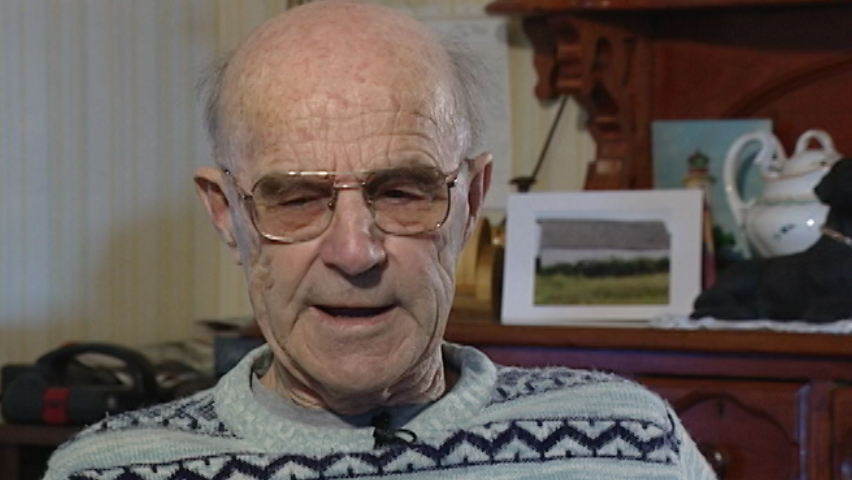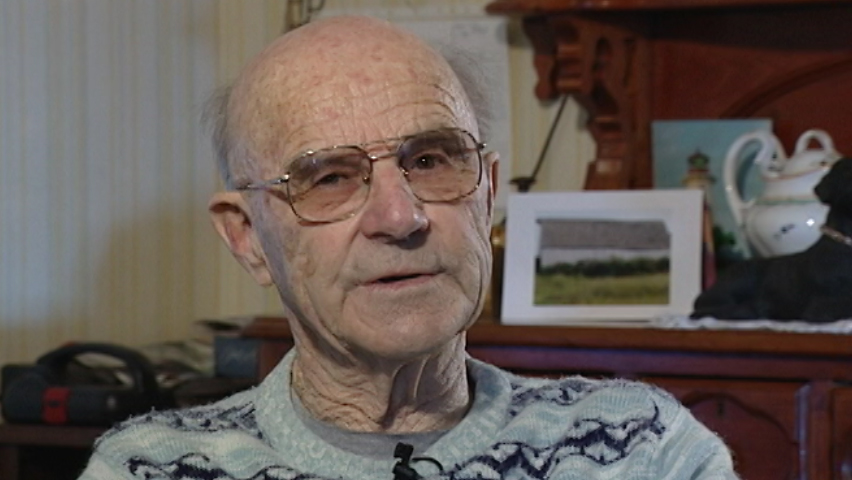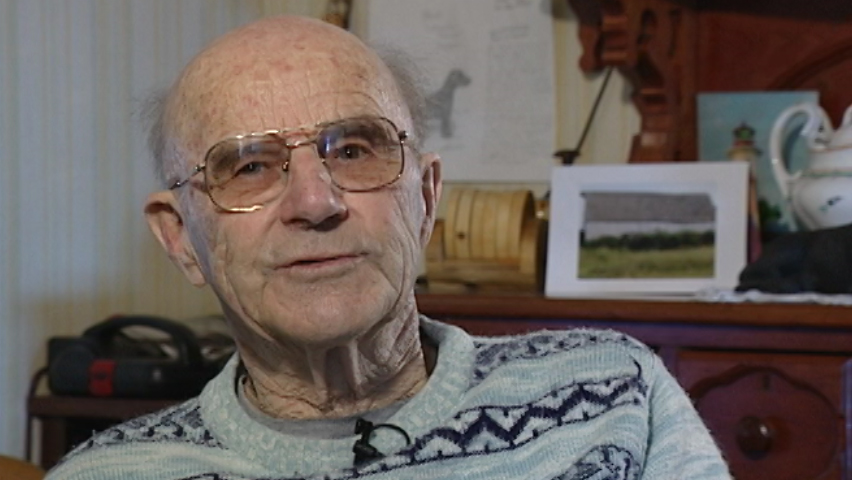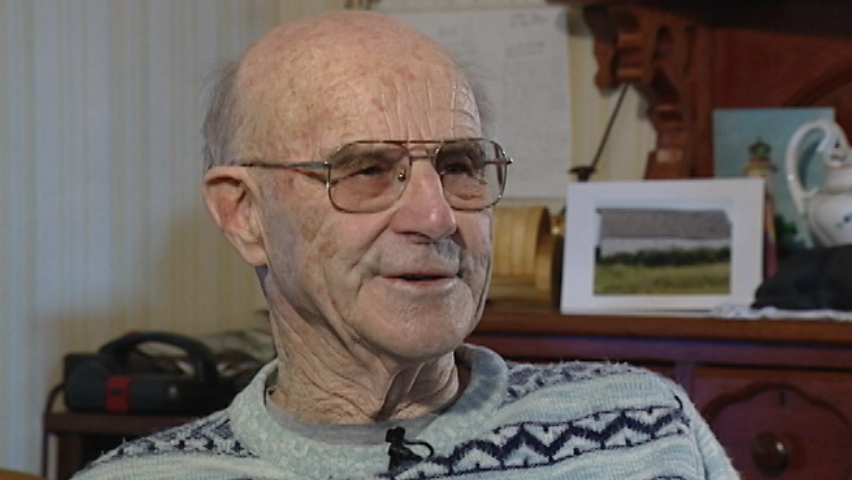There’s an awful difference in your captains.
Heroes Remember
There’s an awful difference in your captains.
Transcript
Framed drawing of medical ship.
square box, on the side of the smoke stack. That’s a big red light up, and a big red cross up there. And those three red crosses on the side had big flood lights hanging over those, shining down on it at night. And then, right from stem to stern, there was little green lights, about little boxes you’ve seen in the pictures there. About that big, and it was about every eightPhotograph of the same medical ship from the drawing.
feet or ten foot around, from stem to stern. She never was meant for a deep-sea boat. She was really a poor sea boat, really in a way. She was flat bottom. She only drew about 20 feet of water, 28 feet or something like that. ‘Cause she was meant for, she was southern going down to Jamaica and those places. She wasn’t an ocean going boat in a way. She rolled pretty bad. But, she went like this, I think she was. Twenty eight degrees was the danger, and different times she went past that, rolling. You couldn’t do anything, you might say, to try to keep people in bed, and so on. You couldn’t feed them in rough weather. It was quite a thing trying to feed people and carry meals and everything in rough weather. This one particular trip that O’Hara, he was going to get there before the Letitia. The colonel got up through the night and went up to the captain’s cabin, or up to the bridge, and said, “You have to change course.” The old captain was on the bridge. He said, “No, I’m the boss.” But he said, “This ship is owned, run by the Canadians.” Oh my wording, trying to think of it. She was chartered like for the Canadian government. CN run her, but we’re paying for it. He said that he’d report him to Ottawa when he got there, if he didn’t change course. So they changed course in the middle of the night. I come on duty about eight o’clock in the morning, just got on duty, when it was announced over the PA system, “Make fast, changing course." They put her into it again and pounded away. It was hard on the patients, and everybody I mean, but there’s an awful difference in your captains. This Captain O’Hara, they said he wouldn’t change course for anything. He just had a straight line across. He lost a couple of ships, I guess, in torpedoes and so on. And after, during the war, we had, throughout the last of it, there was another captain come on for about six months in the wintertime. Captain Armitt his name was, an old Royal Navy captain at one time, and we never had a rough trip with him. He’d be 200 miles off course some- times, going around storms and so on, and you never knew when. Like, in the middle of the nights, you’d probably see him. I remember one night, it was kind of rough. And somebody spoke to me, about two o’clock in the morning. It was Captain Armitt, wondering how everything was going. He was just checking to see if everybody was alright, and so on. But we always got there made good trips. And it was right in the wintertime, and we made better trips than we did any other time before. But he went around the storms and we didn’t lose. We’d be out there, just puddling along … ten miles, two or three miles an hour, or something or other, just steerage in bad storms.Description
Mr. Clark compares the rough seas navigation style of the two captains who commanded the ‘Lady Nelson’.
Charles Howard Clark
Charles Howard Clark was born in Chelton, Prince Edward Island on November 16, 1924. His father worked as a fisherman, carpenter and butcher during the Depression. Mr. Clark indicates that although times were tough, his community shared its resources and no one went hungry. He attended a one room school. Although he was able to enlist, he, like many local youth, had to stay on the farm as the production of food was vital to the war effort. Mr. Clark’s attempts to enlist in 1943 were at first unsuccessful; he was turned down by both the navy and air force, but was finally accepted into the infantry. However, his stay there was short due to a childhood hip injury, which made marching difficult. He then trained as a stretcher bearer, before finally joining the hospital ship ‘Lady Nelson’ as a nurse-orderly. Aboard this vessel, Mr. Clark made seventeen transatlantic voyages, offering medical care of various types to the wounded who were being returned to Canada. He witnessed the Halifax riots and feels much of the blame placed on the military was unwarranted.
Meta Data
- Medium:
- Video
- Owner:
- Veterans Affairs Canada
- Duration:
- 3:31
- Person Interviewed:
- Charles Howard Clark
- War, Conflict or Mission:
- Second World War
- Location/Theatre:
- North Atlantic Ocean
- Branch:
- Army
- Units/Ship:
- Royal Canadian Army Service Corps
- Rank:
- Corporal
- Occupation:
- Nurse-Orderly
Related Videos
- Date modified:



